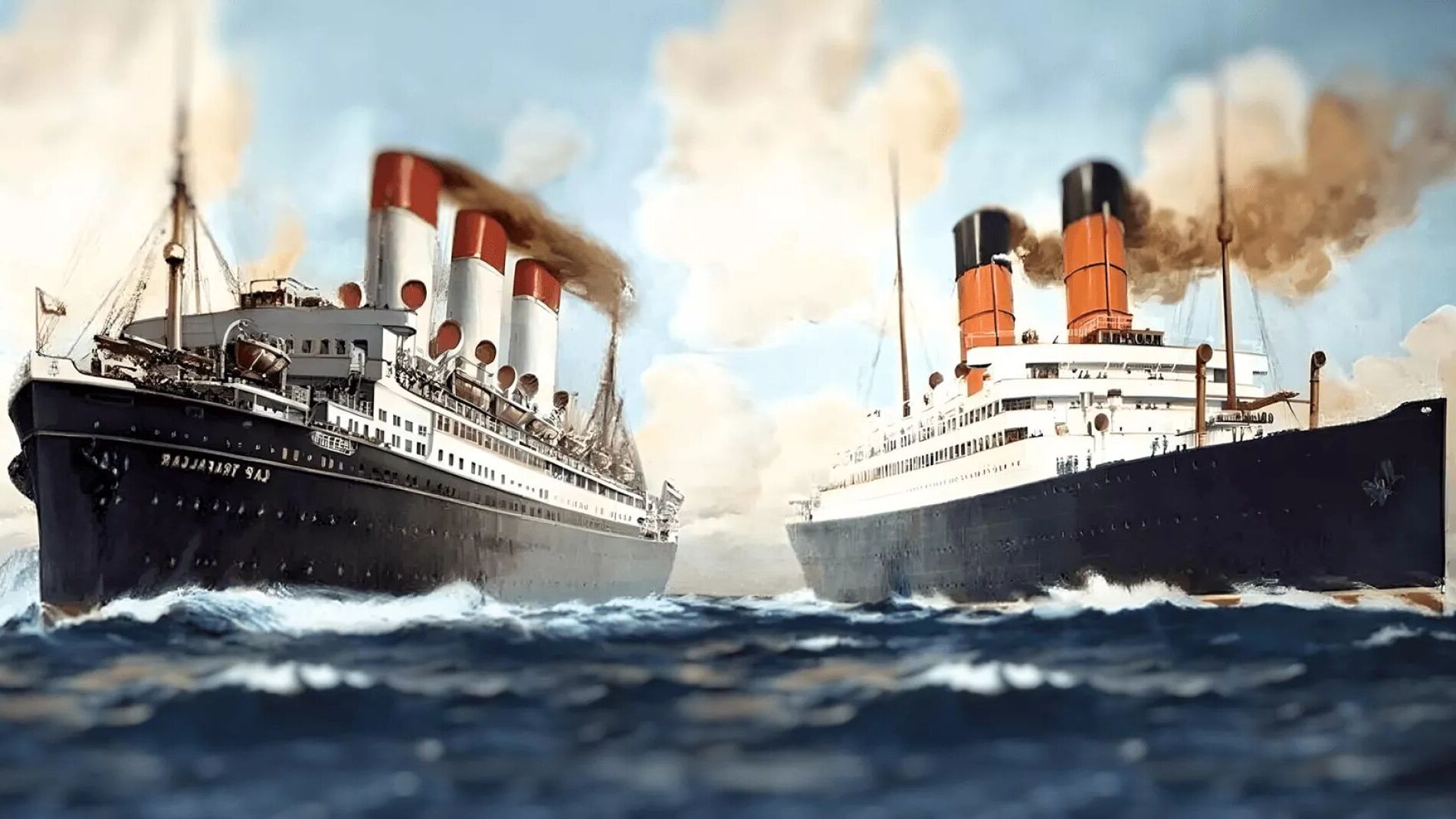
RMS Carmania was a British ocean liner built by John Brown & Company for the Cunard Line. Launched in 1905, this ship was known for its speed and luxury. RMS Carmania played a significant role during World War I, where it was converted into an armed merchant cruiser. In a dramatic naval battle, it famously defeated the German ship SMS Cap Trafalgar. After the war, it returned to passenger service, continuing to ferry travelers across the Atlantic. The ship was eventually scrapped in 1932, but its legacy lives on. Here are 36 intriguing facts about RMS Carmania that highlight its storied past.
Key Takeaways:
- RMS Carmania was a groundbreaking British ocean liner, known for its size, speed, and wartime heroics. Its luxurious accommodations and technological innovations made it a favorite among travelers.
- Despite its eventual fate as scrap, RMS Carmania's legacy as a pioneering and beloved ocean liner lives on, inspiring stories and legends in maritime history.
The Birth of RMS Carmania
RMS Carmania, a British ocean liner, had a fascinating history. Let's dive into some intriguing facts about this remarkable ship.
-
RMS Carmania was launched on February 21, 1905. Built by John Brown & Company in Clydebank, Scotland, she was one of the largest ships of her time.
-
She was owned by the Cunard Line. This famous shipping company also owned other legendary liners like the RMS Lusitania and RMS Mauretania.
-
Carmania was 650 feet long. Her impressive length made her a giant on the seas, capable of carrying many passengers and cargo.
-
Her gross tonnage was 19,524 tons. This measurement indicates the ship's overall internal volume, showcasing her massive size.
-
She had a twin sister ship named RMS Caronia. Both ships were designed to be nearly identical, though they had some differences in their interiors.
Technological Marvels
Carmania was not just big; she was also technologically advanced for her time. Here are some facts about her innovations.
-
Carmania was the first Cunard liner to be powered by steam turbines. This technology allowed her to achieve higher speeds and greater efficiency.
-
Her top speed was 18 knots. This speed made her one of the faster ships of her era, capable of crossing the Atlantic in record time.
-
She had three propellers. These helped distribute the power from her steam turbines, providing better maneuverability and speed.
-
Carmania featured wireless telegraphy. This early form of radio communication allowed her to stay in contact with other ships and shore stations.
-
She had electric lighting throughout. This was a significant improvement over older ships that relied on gas or oil lamps.
Luxurious Accommodations
Passengers aboard Carmania enjoyed a range of luxurious amenities. Let's look at some of the features that made her a favorite among travelers.
-
Carmania could carry 1,550 passengers. She had accommodations for 300 first-class, 350 second-class, and 900 third-class passengers.
-
Her first-class dining saloon could seat 300 people. This grand room was a hub of social activity, featuring elegant decor and fine dining.
-
She had a smoking room for first-class passengers. This room provided a comfortable space for passengers to relax and socialize.
-
Carmania featured a music room. This room was equipped with a piano and other instruments, offering entertainment for passengers.
-
She had a library. Passengers could borrow books and enjoy quiet reading time during their voyage.
Wartime Service
Carmania's story took a dramatic turn during World War I. Here are some facts about her wartime service.
-
Carmania was requisitioned by the British Admiralty in 1914. She was converted into an armed merchant cruiser to serve in the war.
-
She was fitted with eight 4.7-inch guns. These weapons allowed her to engage enemy ships and protect convoys.
-
Carmania fought in the Battle of Trindade. On September 14, 1914, she engaged and sank the German merchant cruiser SMS Cap Trafalgar.
-
She suffered significant damage during the battle. Despite being heavily damaged, Carmania managed to return to port for repairs.
-
Carmania served as a troop transport. She carried soldiers and supplies across the Atlantic, playing a crucial role in the war effort.
Post-War Years
After the war, Carmania returned to civilian service. Here are some facts about her post-war years.
-
Carmania was refitted in 1919. She underwent extensive repairs and upgrades to return to passenger service.
-
She resumed transatlantic voyages. Carmania continued to carry passengers between Europe and North America.
-
Her interiors were updated. The refit included modernizing her accommodations and public spaces.
-
Carmania was involved in a collision in 1923. She collided with the British cargo ship SS Roslin Castle but sustained only minor damage.
-
She was laid up in 1931. Due to the Great Depression and declining passenger numbers, Carmania was taken out of service.
The End of an Era
Every ship has its final voyage. Here are some facts about the end of Carmania's service.
-
Carmania was sold for scrap in 1932. Her once-grand hull was dismantled, marking the end of her seafaring days.
-
She was scrapped in Blyth, England. The process of breaking her down took several months.
-
Her legacy lives on. Despite being scrapped, Carmania is remembered as a pioneering and beloved ocean liner.
Interesting Tidbits
Carmania's history is filled with fascinating details. Here are some lesser-known facts about this iconic ship.
-
She had a crew of 400. This dedicated team ensured the smooth operation of the ship and the comfort of her passengers.
-
Carmania's maiden voyage was on December 2, 1905. She sailed from Liverpool to New York, marking the beginning of her career.
-
She was known for her stability. Despite her size, Carmania was praised for her smooth and stable voyages.
-
Carmania was featured in postcards and advertisements. Her image was used to promote the Cunard Line and attract passengers.
-
She had a distinctive black and white funnel. This design made her easily recognizable among other ships.
-
Carmania was a favorite among immigrants. Many people traveled on her to start new lives in North America.
-
She inspired stories and legends. Carmania's adventures, especially her wartime service, became the stuff of legend.
-
Her name lives on in maritime history. RMS Carmania remains a symbol of early 20th-century ocean travel and innovation.
Final Thoughts on RMS Carmania
RMS Carmania's story is a blend of luxury and wartime heroics. This Cunard Line ship, launched in 1905, dazzled passengers with its opulence. Yet, its true legacy emerged during World War I. Carmania transformed into an armed merchant cruiser, famously defeating the German ship SMS Cap Trafalgar in a dramatic naval battle. This victory showcased the ship's resilience and strategic importance. After the war, Carmania returned to civilian service, continuing to ferry passengers across the Atlantic. Its dual role as a luxury liner and wartime vessel makes it a fascinating chapter in maritime history. Whether you're a history buff or just curious, Carmania's tale offers a glimpse into a bygone era of elegance and bravery. This ship's journey from luxury to legend remains a testament to human ingenuity and adaptability.
Frequently Asked Questions
Was this page helpful?
Our commitment to delivering trustworthy and engaging content is at the heart of what we do. Each fact on our site is contributed by real users like you, bringing a wealth of diverse insights and information. To ensure the highest standards of accuracy and reliability, our dedicated editors meticulously review each submission. This process guarantees that the facts we share are not only fascinating but also credible. Trust in our commitment to quality and authenticity as you explore and learn with us.


